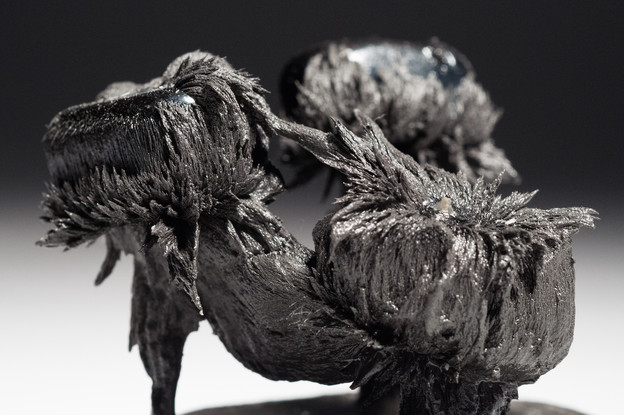Forcefield
Pt. 7

Art comes from the excess, in the world, in objects, in living things, that enables them to be
more than they are, to give more than themselves […] Art is the consequence of that excess, that energy of force, that puts life at risk for the sake of intensification. — Elizabeth Grosz, Chaos, Territory, Art: Deleuze and the Framing of the Earth[1]
[T]he work that takes place in art — “work” understood here not as a produced object but in the active, transformative sense — needs to be approached on the level of force relations. — Krzysztof Ziarek, The Force of Art[2]
There is not one mode of power, but many. All are forms of capture. — Brian Massumi, 99 Theses on the Revaluation of Value: A Postcapitalist Manifesto[3]
It’s fashionable among politically militant avant-garde poetry communities to insist on the inefficacy of the poem, primarily because poetry, we’re told, is ultimately powerless: it lacks the necessary force to fundamentally alter material conditions on the ground, and as a result, it’s all but impotent in the face of supposedly “real” social forces. While it may be true that the poem is functionally power-less in a neoliberal, capitalist milieu, it’s worth considering what we mean by -less in this context, the primary concern of Krzysztof Ziarek’s The Force of Art:
The “-less” in the adjective”‘powerless,” when attached to art, does not necessarily mean lack of power but instead indicates an alternative economy of forces, which changes the very makeup of power. In this view, the powerlessness of art is not a negative judgment rendered on artworks but a provocative indication that art functions otherwise than through dominant articulations of power.[4]
I wouldn’t say the poem fundamentally alters the makeup of power, but it certainly fucks with it. Think of the poem as a frame, demarcating a mesh of imbricated forces, a network constituting the fabric of the real we will, framing a cross-cut plane of immanence, forces both heteroclite and utterly homogenous interacting in dynamic complexity. Within the limits of this frame, differential processual becomings commingle, creating a dynamic configuration of intensity by which the poem directly addresses the tension produced by forces struggling to articulate themselves. In this sense, the poem abstracts from (while participating in) cobecomings that constitute this network of tensions. It’s not that the poem attempts to neutralize force, but instead, as a form of capture, a force itself, it constitutes what Adorno calls a “forcefield”: “Through its inner tension, the work is defined as a force field even in the arrested moment of its objectivation. The work is at once the quintessence of relations of tension and the attempt to dissolve them.”[5]
However, the poem’s forcefield materially reifies tension in a productive web without dialectically synthesizing difference in order to abjure pat representations of the real. The poem’s power is its ability to allow these forces to manifest without wholly neutralizing them. Rather than Hegelian, the poem employs a Deleuzian synthesis of disjunction, bringing world(s) into “a precarious state,” as Nicholas Bourriaud has it, “constantly affirming the transitory and circumstantial nature of the institutions that structure social life, the rules governing individual and collective behavior.”[6]
This is the true nature of the poem’s excess: unsettling the real by amplifying its fault lines, identifying a path toward generative novelty by troubling fixed bifurcations like subject/object and reader/writer. Ziarek calls this practice “aphesis,” “a releasing, a letting be or a letting go,”[7] a term best understood as synonymous with Heidegger’s lassen, “a departure from the binary articulation of domination and submission, from active form and passive matter.” According to Ziarek, “[lassen] enables a becoming, in which forces unfold through each other in a continuously reactivated field of reciprocal shaping, because in this type of articulation all forces are both affected and affecting: they unfold in the middle voice, eschewing the passive/active opposition.”[8] Brian Massumi describes the nature of this “middle voice” as an affective event that
does not presuppose a passivity on one side and an activity on the other. It involves a differential of modes and degrees of activity that is eventfully resolved, to structuring effect. This is very much in keeping with Michel Foucault’s definition of power as a complex differential of forces, where the power to affect is strictly coincident with the power to resist, and where power effects accumulate.[9]
Within the forcefield of the poem, reader and writer alternate between disjunctive and conjunctive syntheses to keep the tension taut while amplifying lines of force. Disjunctive syntheses rely on feedback, noise, dissonance, rupture — they produce generative caesurae, drawing attention to the ways potential gets folded into worlding in order to fundamentally foreclose on force. As a result, disjunctive syntheses put pressure on axiomatic thinking, disrupting stasis to locate surplus on the horizon. Connective syntheses, on the other hand, bring worlds into contact through a shared umwelt mediated (if not totally constituted) by the poem itself. By allowing reader and writer to co-compose an alternative terrain, the poem creates a space saturated by potential rather than a territory defined solely by the mobilization of its use-value. If anything, poetry’s power-less-ness is precisely its force: by generating an alternative economy of forces, the tenuous bonds stringing together the real tear just enough to see through to a possible potential future.
1. Elizabeth Grosz, Chaos, Territory, Art: Deleuze and the Framing of the Earth (New York: Columbia University Press, 2008), 63.
2. Krzysztof Ziarek, The Force of Art (Stanford, CA: Stanford University Press, 2004), 8.
3. Brian Massumi, 99 Theses on the Revaluation of Value: A Postcapitalist Manifesto (Minneapolis: University of Minnesota Press, 2018), 53.
5. Theodor Adorno, Aesthetic Theory (New York: Bloomsbury Academic, 2013), 388–89.
6. Nicolas Bourriaud, The Exform (Brooklyn, NY: Verso, 2016), 43.
7. Ziarek, 12.
9. Brian Massumi, Politics of Affect (Malden, MA: Polity Press, 2015), 92–93.
Prolegomena to (Any Future) Process Poetics